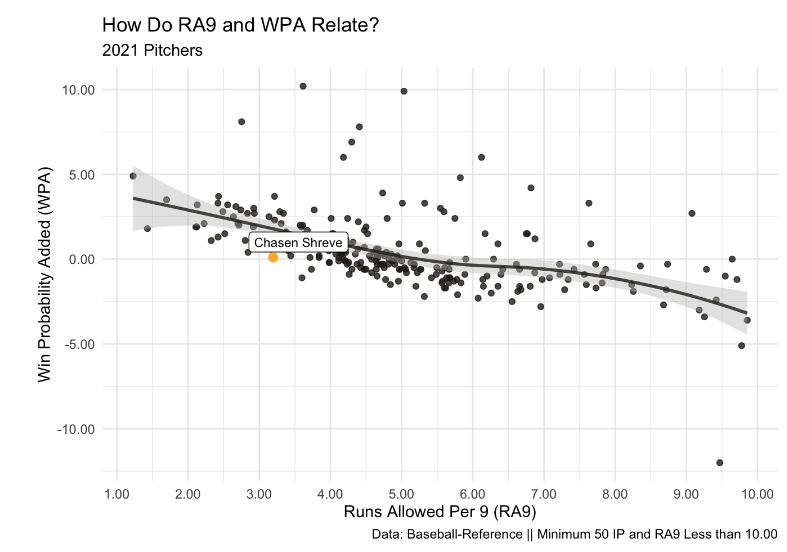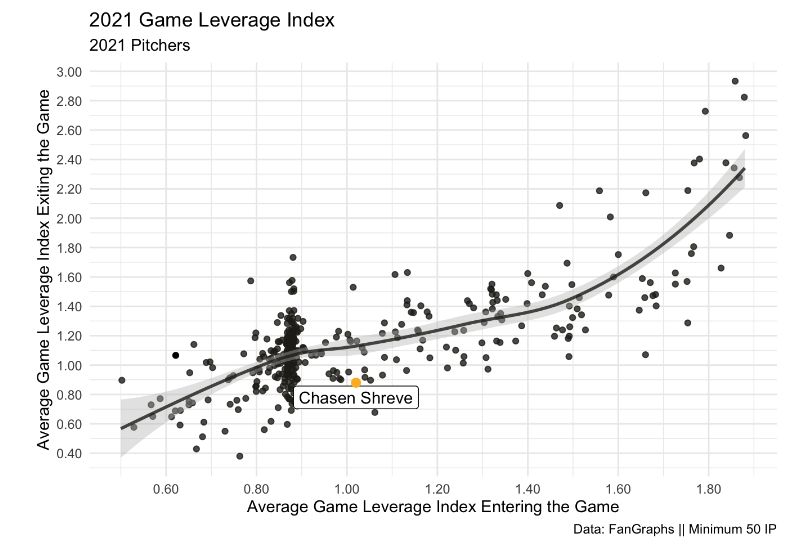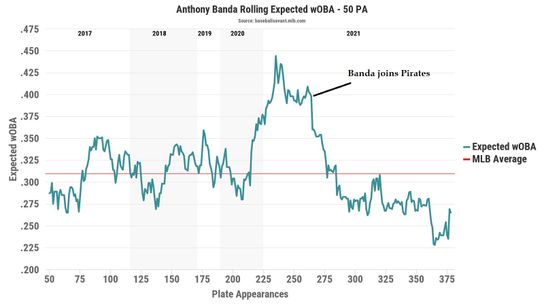Looking ahead to the Pirates’ 2022 roster, most of their roster construction falls into one of two categories. The first is they have an established major leaguer manning that position (center field, catcher, third base).
The other is that a position is more open ended or up for grabs, but there’s a prospect who should be major league ready at some point next year. In the middle infield there are Tucupita Marcano, Rodolfo Castro and Oneil Cruz. Travis Swaggerty is the headliner in the next batch of outfielders. Mason Martin is at first base, and there are a handful of intriguing starting pitchers, like Roansy Contreras, Miguel Yajure and Max Kranick.
The exception to this is the bullpen. Sure, there is Nick Mears, Blake Cederlind and potentially Hunter Stratton and Yerry De Los Santos, but they’re all right-handed. The Pirates are thin on left-handed pitching throughout the system, with 2021 second-round pick Anthony Solometo being the only notable southpaw in the minors.
During the trade deadline, the Pirates shipped Braeden Ogle to the Phillies, trading away arguably the best left-handed prospect Ben Cherington inherited for Abrahan Gutierrez, a Class Low A catcher. Blake Weiman has been iffy in Indianapolis and is more of a feel and control guy than a traditional bullpen piece. He and Joe Jacques are the only Class AAA left-handed relievers who have even a shot at the majors, but neither looks likely right now.
So that means the Pirates are going to rely on free agent signings, trades and waiver claims to add some lefty relief to the team. Steven Brault could theoretically transition back into a bullpen role in 2022 after a pair of lat injuries sidelined him for most of this past season, but internally, the Pirates have Chasen Shreve, Sam Howard and Anthony Banda to turn to out of the bullpen.
One of them looks like they could be a potential sleeper.
CHASEN SHREVE
After some debate of if Shreve accumulated enough service time in 2021 to become a free agent, it’s been confirmed that he is still under arbitration control for 2022. So even though he isn’t walking, it wouldn’t be surprising to see a lefty with a 3.20 ERA drawing some trade interest.
That 3.20 ERA is a bit misleading, though, because while he doesn’t allow a lot of runs, those runs tend to be more costly. According to Baseball Reference, his win probability added was just 0.1 on the season. Compared to other pitchers with a similar amount of runs allowed per nine innings, that is noticeably lower WPA:

The correlation is self explanatory: pitchers who tend to give up fewer runs tend to give their team a better chance of winning. Shreve was a bit of an exception, or at least didn’t fall in line with the trendline.
That chart above factors in inherited runners scoring too, something that Shreve was pretty average at in 2021. Of the 28 he inherited, 10 scored (36%). The league average was 35%. Keep that in mind when looking at this next chart.
Using the game leverage index, we can compare the team’s chances of winning from when they entered the game compared to when they exited. This is independent of how the team performed in other innings and just on the reliever’s performance. Here, Shreve struggled:

Shreve ranked in the bottom 12% of the league in that data set (game leverage index at exit - entrance). If he does return to the Pirates, he will likely be used deeper in games again. That could be problematic.
Does a one year sample size guarantee the same issue will continue in the future? No, but Shreve is one of the few veterans on that pitching staff who could be a late-inning guy. His first extended look in that role was mixed.
SAM HOWARD
Howard is a tough player to analyze, because I could just post this chart:
-544x306.jpg)
… And call it a day. Howard had a big midseason drop in spin and finished with a 5.60 ERA. That makes him the most likely out of these pitchers to be non-tendered.
But that isn’t the whole story for Howard. On the season, 15 of his 28 earned runs allowed came in a stretch of seven games, which also had a pair of trips to the injured list included. He also finished strong, pitching to a 3.52 ERA with 13 strikeouts against four walks in his final 10 appearances of the season.
I did a Mound Visit on Howard during the 2020 season looking at some of the aspects of his game that were contributing to him starting to break out. Two big ones were his slider usage and his arm slot. When Howard started slumping midseason, he was throwing the fastball more (though this could just be a product of trying to get back in the zone) and his arm slot was rising. After his second trip to the injured list, it dropped back to where it was in 2020 and the early parts of 2021.
Is pitch usage and a more optimized arm slot enough for Howard? Probably not, but I don’t think the drop in spin is a death knell either. Some of his best, most effective innings came in September. If he can stay in the zone and minimize walks, he will be fine. But that’s something he’s always been inconsistent with in the majors.
ANTHONY BANDA
Here’s that sleeper I mentioned.
Reflecting back on Banda’s time with the Pirates, the left-hander was sneakily good over the final two months of the season, recording a 3.42 ERA over his 26 ⅓ innings. That isn’t a huge sample size and he did issue a dozen free passes, but there were some positive signs that support that he improved after coming to a new team.
For one, take his expected wOBA, which weighs strikeouts, walks and the quality of contact against him:

Banda’s peripherals started to improve almost immediately after the Pirates claimed him off waivers. This could partly be tied to him throwing from a new arm slot.
Compare his delivery with the Mets back in July to his final outing of the season with the Pirates:
It’s the same arm action and lower half mechanics, but at a higher release point, bringing his glove up to face level. That’s the same arm motion he had when he broke into the majors in 2017, but he brought it down for a higher leg kick when he became a reliever. This new motion takes parts of those two old deliveries and combines them for a more direct movement towards the plate. With it, Banda’s fastball velocity ticked up to about 94.5 mph.
There are some red flags in those final months to keep an eye on. The walks, inconsistencies hitting targets up in the zone, a higher percentage of pitches over the heart of the plate. But overall, Banda was able to avoid the barrel with the fastball, changeup and curve and posted his best run as a major leaguer. He won’t live up to the hype of being a former top 100 prospect, but he has better stuff than what you normally get with the crafty lefty-types. The Pirates have scrambled for left-handed relief for several years now. Banda could click if he continues to get this greater opportunity.

